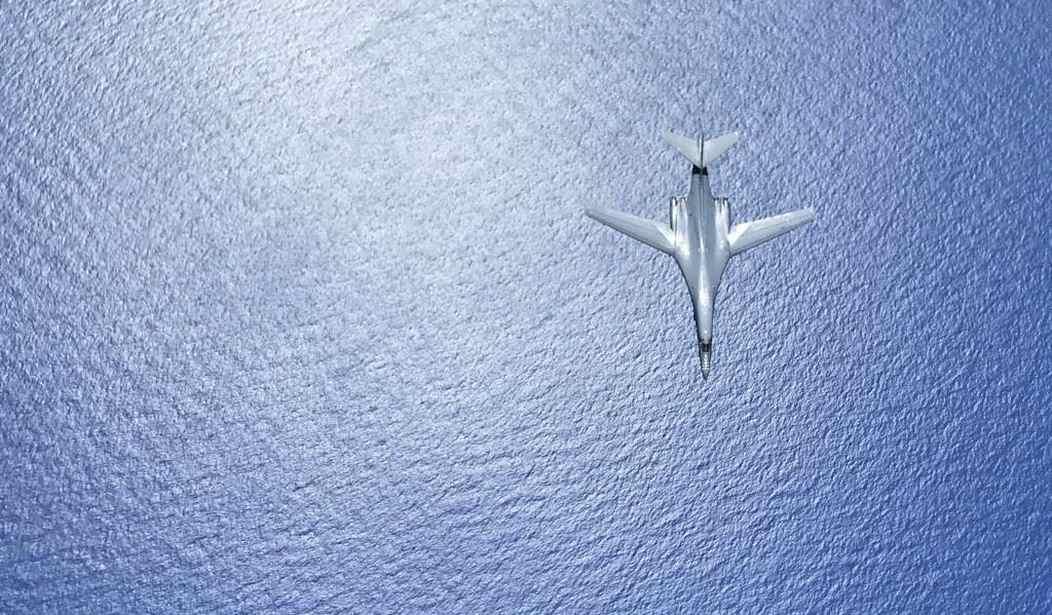In the annals of "Ain't got no quit in 'em," the climate cultists behind wind energy certainly have a spot near the top. And the two latest proposals I've seen are pretty impressive as far as imagination and the potential for financial disaster go.
In Maine, no stranger to the looney side of life, the Green government there headed by daffy Governor Janet Mills is going with a floating wind farm. Which, I have to say right off the bat I find very confusing, because I thought that Maine banned offshore wind in 2021.
US state Governor of Maine Janet Mills has signed a law prohibiting new offshore wind projects in the state’s waters.
LD 1619 preserves state waters for recreation and fishing, where up to 75% of Maine’s commercial lobster harvesting occurs, cements into law Maine’s priority of locating offshore wind projects in federal waters in the Gulf of Maine.
It turns out they only mostly banned it. Because these are "floating" they don't count.
...The new law comes after Governor Mills last month signed into law another bill, LD 336, which advances Maine’s creation of the nation’s first research area for floating offshore wind in federal waters of the Gulf of Maine.
Slick.
Frickin' Democrats.
Anyways, here we are, here the turbines come...
The Government of Maine has really big plans for floating wind, a floating net zero fantasy, in fact. Since floating wind power is the next big green thing, it is worth taking a close look at this ruinous vision.
Floating wind is a fad, not an established technology. It has yet to be built at utility scale or tested in a hurricane. The world’s biggest grid-connected system is a tiny 50 MW and just came online off Scotland.
The cost of floating wind is necessarily much greater than fixed wind. A fixed wind tower sits on a simple monopile, while a floating tower sits on a huge complex structure called a floater. We are talking about massive 500-foot towers with 500-ton turbines on top and 300-foot blades catching the wind.
The floater has to be large enough to keep this monster tower from blowing over. Then, it has to be even bigger to contain enough air to be buoyant. It also has to be anchored to the ocean floor in ways that require a lot of different mooring lines.
The small existing floating generator systems cost around three times what fixed wind costs per MW, but the big and hurricane-proof generators might cost even more. Over a hundred designs have been proposed, which shows just how immature Floating wind technology is.
...and bend over Mainers.
...How do they justify buying so much floating wind? Simple, it is a net zero fantasy. They have a 115-page “Maine Offshore Wind Roadmap” that explains it.
For a start, they shut down all their existing combustion generators, mostly burning either gas or wood. Maine is 90% forest, so there is a lot of wood. Then, they electrify all the other forms of combustion. For example, 60% of homes are heated with fuel oil, so they switch to heat pumps or something that works in really cold weather. Of course, all the cars and trucks are electric.
The projected cost of the 3,000 MW of floating wind is huge. Using the reported three times fixed wind figure, I get a rough estimate of $50 billion for construction and an equal amount for financing and profit, giving a total cost of around $100 billion. It could be a lot more once large-scale and hurricane-proof technology is developed if it ever is.
So pret-tee.
Proposed floating offshore wind turbines in the Gulf of Maine will stand at 850 feet tall.
— The Maine Wire (@TheMaineWire) February 21, 2024
The Prudential Tower in Boston is 750 feet tall. pic.twitter.com/2OnJUjFAvP
The writing of separate legislation to allow "floating" wind farms was a particularly sweet trick. Those aren't exactly what they've been sold as. Everyone points to the Scottish wind farm that finally came online, as does the article above.
But you know what's happened?
It just as quickly came offline and five of the six turbines had to be hauled away for "heavy maintenance." From Scotland to Norway, no less.
A contract has been dished out for “major maintenance” on Hywind Scotland, the world’s first floating wind farm, which is set to be towed from Aberdeenshire to Norway for repairs.
...Equinor confirmed last week that the five 6MW Siemens Gamesa turbines would need “major maintenance” after six years of operation.
This is the second time in recent months when a floating wind project off the Scottish coast has gone overseas for repairs, despite nearby ports harbouring offshore wind ambitions.
A turbine from the Kincardine project, once the largest project of its kind globally, was sent to Rotterdam last May, though developers said they hope to carry out any future repairs in situ.
The situation was slammed by former UK offshore wind champion Tim Pick as a “national disgrace”.
The world's very first "floating wind farm" has gone down in ignomious defeat, as well.
About seven years after the world's first floating wind turbine was installed off the eastern Japan prefecture of Fukushima, the Japanese government announced its withdrawal from the offshore wind farm, disappointing survivors of the March 2011 Great East Japan Earthquake and tsunami.
Don't let technology that may never be viable stop you, Green dreamers and schemers.
It's only money.
Speaking of which, the federal government has come up with a doozy of a spending idea in the name of saving Gaia.
I had to read this one twice as the "U.S. territories" they were talking about aren't, like, Puerto Rico.
Authorities advance plan for offshore wind near US territories https://t.co/V3cW4rUtsm pic.twitter.com/kB5TcGPQQp
— Splash (@Splash_247) June 20, 2024
Oh, hay-yull, no. This brilliant administration is pitching plans to build wind farms in the Pacific.
...BOEM is also inviting entities in the US territories that have the capabilities, expertise, and interest in carrying out environmental monitoring and conducting studies.
To formally request ideas for baseline environmental and socioeconomic studies, the bureau has issued a request for letters of interest as well as a request for information to determine which entities in the US territories have the required capabilities. The deadline for responding to the LOI and RFI is August 23, 2024.
The US territories fall outside of the Lower 48 states, Alaska, and Hawaii. The US has five inhabited territories – American Samoa, Guam, Northern Mariana Islands, Puerto Rico, and the Virgin Islands.
The country also holds nine uninhabited territories – Baker Island, Howland Island, Jarvis Island, Johnston Atoll, Kingman Reef, Midway Atoll, Navassa Island, Palmyra Atoll, and Wake Island – and claims two more – Bajo Nuevo Bank, and Serranilla Bank – but those are under dispute with Colombia and Jamaica which control the two.
I do not have a calculator that could do the #mathz on any project in the Pacific. Holy crap. They are mind-blowingly and prohibitively expensive off the coast of New Jersey, where every last bit of infrastructure and logistics resupply is available onshore. You can't ship a dog to Guam these days - how do you get all the men, specialized equipment, cables, platforms, ships, etc., out to the middle of the Pacific and deliver affordable electricity to boot?
Who comes out to haul a turbine back to Norway to fix it?
And if these were going to be offshore, has anyone looked at the depths just off the coast of these islands?
Golly Nell. I mean, this shrieks impractical fever dream on paper just by looking at a map and reading a few news articles about what's happening in the industry day to day.
The Pacific is a big, deep blue place, and the distances are enormous. People have no concept unless they've transited it in some fashion.
And now, I will play Devil's Advocate to my own argument.
Or actually, I'll let Ebola do it because he asked me why when I called to ask him about typhoons. He lived in Guam for three years, was stationed at Andersen Air Force Base, and worked closely with the Joint Typhoon Center in Honolulu while he was there when things would start firing up. Our boy knows his storms.
He was pretty intrigued by the BOEM concept and told me if there was some way to make wind work financially - they have constant easterlies blowing so it's not a question of that - and if the power went to Guam, Tinian, and Saipan, that would be "amazing." That's the word he used.
He told me Guam's grid was in sad shape, and it's still trying to recover from the last big typhoon that hit on top of that. The main sources of power for the island are three coal-fired plants that generate all their electricity. Obviously, the coal is shipped in, so that's always been a weak link.
Andersen Air Force Base is a major presence in the Pacific - hence my picture of one of their B-1s above - and, with the Chinese sword rattling, keeping and protecting the power grid is a major concern.
He feels that wind could be a real boon for the energy security of the entire chain if whoever got the leases had their logistic side of the house using Japan as the base for parts, maintenance, etc., and dedicated the power generation to the islands.
Can they bring it in affordably at those distances to do so?
There are a lot of "ifs" there. But what he told me does make perfect sense and is 100% what the dream of wind power was meant to be and do, but up to now hasn't.
I guess there's always hope.








Join the conversation as a VIP Member